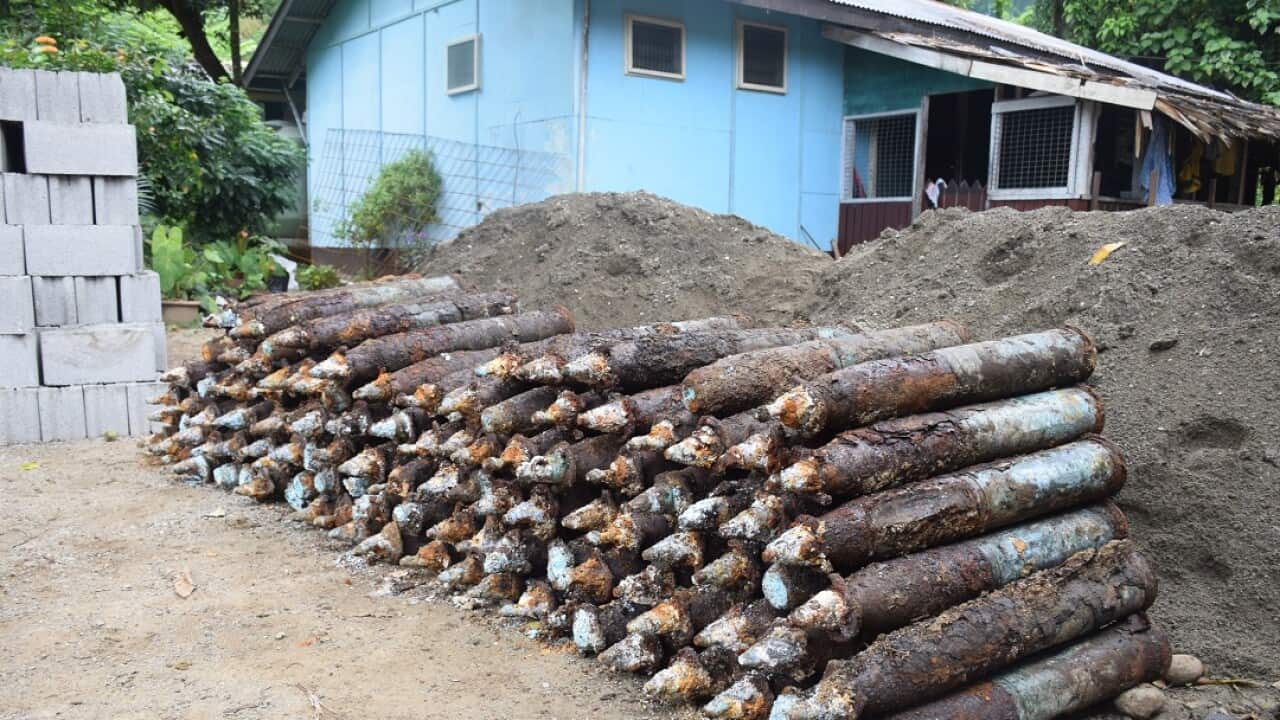Key Points
- Explosives experts have removed 202 unexploded munitions from St Nicholas Anglican School in Honiara.
- The explosives had been present for over 80 years and date back to World War Two.
- Many unexploded bombs are believed to remain in Solomon Islands and their removal could take decades.
The rusty projectiles had been there for about 80 years, and their discovery highlighted recent warnings that it could take the nation decades to fully clear away unexploded munitions from World War Two.
Uncovering the UXOs
A total of 202 Unexploded Ordnance (UXOs) were removed from the school grounds, with photographs provided by the police force showing large bombs in the soil beneath and right next to a building.

The Royal Solomon Islands Police Force has an Explosive Ordnance Disposal Department to deal with the projectiles left behind during World War Two. Source: Facebook / Royal Solomon Islands Police Force
Acting Director of the RSIPF EODD Inspector Clifford Tunuki said the Australian Defence Force assisted with the operation, which saw the items taken to a dedicated location known as Hell’s Point, on the outskirts of Honiara, to be safely destroyed.
Less than a year ago, the school where the explosive items were found had been renovated with Australian government funding to accommodate athletes for the Pacific Games.
Dangerous legacy of war
Thousands of unexploded bombs as well as ammunition were left behind.
According to HALO Trust, one of several NGOs involved in projects to locate and deal with unexploded bombs, the RSIPF destroyed almost 42,000 munitions between 2011 and 2020.
Explosives pose a deadly threat
However, a doctor at Honiara’s National Referral Hospital was quoted as saying that the hospital usually deals with five to six patients injured by such items each year.

Unexploded projectiles collected by the Explosive Ordnance Disposal Department are taken to and disposed of at Hell’s Point on the outskirts of Honiara. Source: Facebook / Royal Solomon Islands Police Force
“The actual number of injuries per year is estimated to be much higher than this,” the report said.
Some local fishers seek out unexploded munitions to remove the explosives within them to carry out a destructive fishing method known as ‘dynamite fishing’, which stuns or kills fish.
An ongoing issue
Members of the Australian military will participate in identifying and disposing of explosive items in the Western Province as part of Operation Render Safe, scheduled for September.
